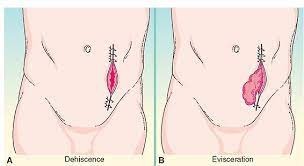Aydan Miller is an 8-year-old with a history of Type 1 Diabetes. Current medications are: Glargine (Lantus; Insulin 5 units subcutaneous at bedtime Insulin lispro (Humalog) 1 unit per 50 grams of carbohydrates eaten. Aydan has just eaten 150 grams of carbs for lunch at school.
Which of the following medications will the nurse prepare to administer to Aydan?
3 units of his prescribed long acting insulin.
3 units of his prescribed rapid acting insulin.
5 units of his prescribed long acting insulin.
150 units of prescribed rapid acting insulin.
The Correct Answer is B
According to the given information, Aydan's insulin lispro (Humalog) dosage is 1 unit per 50 grams of carbohydrates eaten. As Aydan has just consumed 150 grams of carbs for lunch, we can calculate the insulin dose as follows:
Insulin dose = Carbohydrates eaten / Insulin-to-carbohydrate ratio Insulin dose = 150 grams / 50 grams/unit
Insulin dose = 3 units
Therefore, the nurse should prepare to administer 3 units of Aydan's prescribed rapid-acting insulin (Insulin lispro) to cover the carbohydrates he consumed for lunch. The long-acting insulin (Glargine) is typically given at bedtime to provide a basal insulin level and is not directly related to meal coverage.
Nursing Test Bank
Naxlex Comprehensive Predictor Exams
Related Questions
Correct Answer is A
Explanation
Wound evisceration refers to the protrusion of internal organs or tissues through an open wound. In this case, with the separation of the wound and extrusion of the intestine through the opening, it is a clear indication of wound evisceration. It is a surgical emergency that requires immediate medical attention.
Wound dehiscence, on the other hand, refers to the separation or opening of a previously closed surgical incision or wound. It does not involve the extrusion of internal organs or tissues.

Wound infection refers to the presence of infectious microorganisms in the wound, leading to inflammation and other signs of infection.
Wound tunneling refers to the formation of narrow channels or tunnels within the wound, often caused by improper wound healing or infection.
Correct Answer is C
Explanation
School-age children typically have a growing awareness of their bodies and an understanding of potential harm or pain. They may fear procedures or treatments that involve physical discomfort, such as injections, blood draws, or invasive procedures. The fear of experiencing pain or bodily injury can cause anxiety and distress in school-age children.
It is important for the nurse to acknowledge and address the child's fear of pain or bodily injury by providing age-appropriate explanations, offering reassurance, and implementing strategies to minimize discomfort. This may involve using distraction techniques, providing emotional support, and ensuring proper pain management during procedures.
While loss of privacy and control, separation anxiety, and stranger anxiety can also be stressors for school-age children, the fear of pain or bodily injury is often a significant concern that may require specific attention and interventions from the nurse.
Whether you are a student looking to ace your exams or a practicing nurse seeking to enhance your expertise , our nursing education contents will empower you with the confidence and competence to make a difference in the lives of patients and become a respected leader in the healthcare field.
Visit Naxlex, invest in your future and unlock endless possibilities with our unparalleled nursing education contents today
Report Wrong Answer on the Current Question
Do you disagree with the answer? If yes, what is your expected answer? Explain.
Kindly be descriptive with the issue you are facing.
